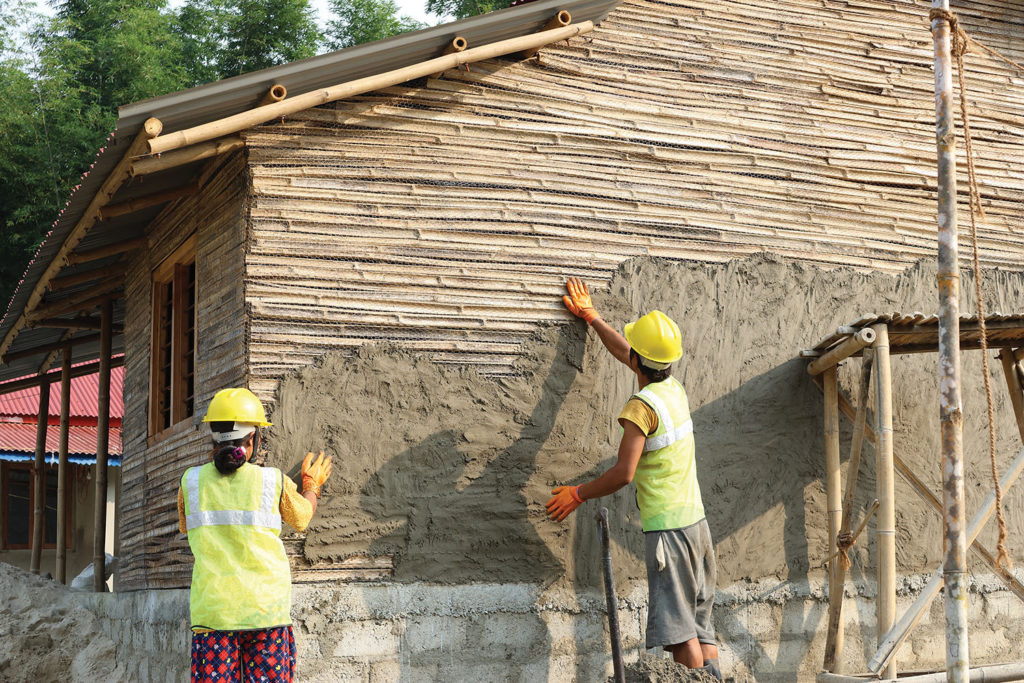The Symbiotic Relationship between Housing and Health
March 20, 2024
Climate change was famously called a monster of our own making. Then came the COVID-19 pandemic in late 2019, which swiftly evolved into the most significant health problem of this century. The health and economic fallouts are well documented, particularly on already vulnerable families and communities.


⠀
For some people, staying at home posed threats to their health and well-being, including infestations, mold, and structural housing problems.
Through these global crises, housing continues to play a pivotal role in ensuring people’s health and well-being. When the pandemic struck, governments around the world including Asia ordered people to stay at home to prevent the spread of COVID-19. For some people, however, staying at home posed threats to their health and well-being,1 including infestations, mold, and structural housing problems. Leilani Farha, former U.N. special rapporteur on the right to housing, summed it up. “Housing has become the front-line defence against the coronavirus.2 Home has rarely been more of a life-or-death situation.”
RELATED: Bamboo and earth-based materials
Even in the absence of a global pandemic, housing and health are closely linked in so many ways. Researchers from the International Institute for Environment and Development (IIED) modelled the impacts on economic growth, health and education3 if countries around the world upgraded informal settlements on a massive scale. They found that adequate and safe housing, particularly in informal settlements, could lead to a 4 per cent growth in life expectancy, which is equivalent to adding an average of 2.4 years of life around the world. In addition, a staggering 730,000 lives would be saved each year globally.
The IIED report also highlighted how housing materials predict under-five children’s mortality. A case in point is Nigeria that has the highest under-five mortality rate in the world. Researchers found that the risk of dying before the age of five years4 was higher among children who lived in houses built with inadequate housing materials than those in moderate and adequate housing materials. The 2017 study in Nigeria concluded their findings supported other research that established a link between ill health and poor housing conditions.


Due to demographic and climate changes, housing is becoming increasingly important to public health, according to the World Health Organization (WHO).5 Poor housing is associated with a wide range of health conditions such as respiratory diseases including asthma, cardiovascular diseases, injuries, mental health and infectious diseases including tuberculosis, influenza and diarrhoea.
HOW HOUSING INFLUENCES HEALTH
The truth is improved housing conditions can save lives, reduce disease and improve the quality of life.8 People living in safe, healthy homes have a stronger foundation for reducing poverty and mitigating climate change, thus contributing to sustainable development. We are not only addressing Sustainable Development Goals 3 (health) and 11 (sustainable cities and communities), but also the overall impact on people, planet and peace. As the WHO puts it, housing is a major entry point for intersectoral public health programmes and primary prevention.
[This is an excerpt. Subscribe to the digital edition or hardcopy to read the complete article.]

Kester Ray de Vera is a Philippine-based construction quality specialist with global housing organisation Habitat for Humanity. He has experience in construction quality assurance and managing disaster responses in Samar, Bohol and Leyte in the Philippines.
Related stories:

Energy-efficient solution from India

Data modelling in housing design

Read more stories from FuturArc 1Q 2024: Health/Wellness!

1 https://onlinelibrary.wiley.com/doi/full/10.1111/1468-0009.12626
2 https://www.ohchr.org/en/press-releases/2020/03/housing-front-line-defence-against-covid-19-outbreak-says-un-expert
3 https://www.habitat.org/sites/default/files/documents/Home-Equals-Launch-Report_Full.pdf
4 https://www.ncbi.nlm.nih.gov/pmc/articles/PMC5248529/
5 https://www.who.int/news/item/26-11-2018-housing-impacts-health-new-who-guidelines-on-housing-and-health
6 https://www.habitat.org/our-work/impact/research-series-how-does-housing-impact-health
7 https://habitat.org.nz/several-hundred-thousand-kiwi-families-are-experiencing-unacceptable-living-conditions-according-to-new-aotearoa-housing-survey/
To read the complete article, get your hardcopy at our online shop/newsstands/major bookstores; subscribe to FuturArc or download the FuturArc App to read the issues.
Previously Published Main Feature
Contact us at https://www.futurarc.com/contact-us for older commentaries.


